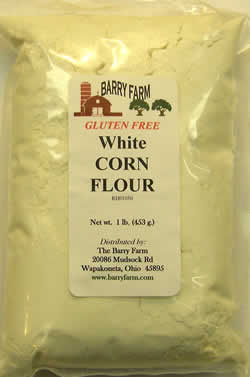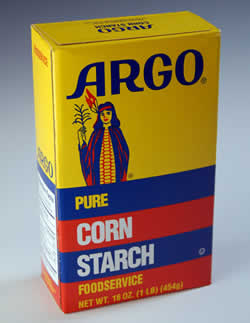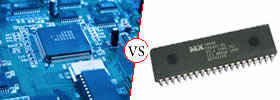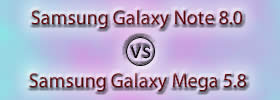Difference between Corn flour and Cornstarch
Key Difference: Corn flour and cornstarch are the same things. They are used for thickening agents. Corn flour is a powdery agent made from corn and comes in white and yellow color. On the other hand, cornstarch is another name for corn flour. The powder is used as a thickening agent in certain foods, providing twice the thickening power of corn flour.
 Corn flour and Cornstarch is one and the same thing. It depends on the location you live in. In the United States, people call it corn starch and in the United Kingdom; it is called corn flour. Both cornstarch and corn flour do the same thing, they thickened the food item. Cornflour is only made from fully grown corn while baby corn is different. (See the difference between corn and baby corn). Cornflour may me made from regular corn or sweet corn and used in different cuisines. (See the difference between corn and sweet corn).
Corn flour and Cornstarch is one and the same thing. It depends on the location you live in. In the United States, people call it corn starch and in the United Kingdom; it is called corn flour. Both cornstarch and corn flour do the same thing, they thickened the food item. Cornflour is only made from fully grown corn while baby corn is different. (See the difference between corn and baby corn). Cornflour may me made from regular corn or sweet corn and used in different cuisines. (See the difference between corn and sweet corn).
Corn flour is a powdery flour, which comes in yellow and white color, and is used for breading and in combination with other flours in baking goods. In compare to cornstarch, using corn flour as a thickener, one needs to have the quantity of cornflour equal to two times. Lumps are accepted when corn flour is added, while in cornstarch it doesn’t usually create lumps.
 In most cuisines, corn flour and cornstarch are used as thickening agents, i.e. usually to make a soup, broth or sauce thicker in consistency. While both are used for the same thing, however, only one thing is required at a time. When the cornflour and cornstarch both are mixed all together at the same time, it is accepted that a sauce or gravy will be thin. It will not be thicker and will be different in taste. Note that cornflour and corn starch are very finely ground so that they produce good emulsion like mixtures unline multigrain and whole wheat flours that have thickly ground flour. See the difference between multigrain and whole grain and whole wheat.
In most cuisines, corn flour and cornstarch are used as thickening agents, i.e. usually to make a soup, broth or sauce thicker in consistency. While both are used for the same thing, however, only one thing is required at a time. When the cornflour and cornstarch both are mixed all together at the same time, it is accepted that a sauce or gravy will be thin. It will not be thicker and will be different in taste. Note that cornflour and corn starch are very finely ground so that they produce good emulsion like mixtures unline multigrain and whole wheat flours that have thickly ground flour. See the difference between multigrain and whole grain and whole wheat.
Another name for cornstarch is corn flour. It is made from corn and is used as a thickening agent. It is pure starch and there is a lack of gluten which makes it more easy and efficient as a thickening agent for doughs and batters (See the difference between dough and batter). They are generally used to prevent eggs from curdling and are also helpful in the grounding of custards, cheesecakes, and puddings. It is basically a powdery starch that is made out of corn. It thickens very quickly and easily and forms a clear sauce after cooking. Cornstarch is mainly used in dairy products.
Comparison between Corn Flour and Cornstarch:
|
|
Corn Flour |
Cornstarch |
|
Description |
Corn flour is a powdery agent made from corn and comes in white and yellow color. |
Cornstarch's other name is corn flour. The powder is used as a thickening agent in certain foods, providing twice the thickening power of corn flour. |
|
Gluten |
The gluten in flour makes thickening agent less effective. |
They add twice the thickening powder compared to flour. |
|
Water |
Corn flour is added with hot water. |
Cornstarch is added to cold water. |
|
Produce |
Its blend leaves a cloudy look |
It produces a shiny or glossy look. |
|
Made from |
Corn |
Corn |
Also see: The difference between Corn and Maze
Image Courtesy: barryfarm.com, ninecooks.typepad.com









Comments
Ash.
Sun, 12/17/2017 - 21:45
mark
Fri, 03/02/2018 - 21:29
Kev
Wed, 11/29/2017 - 11:13
Katia
Sat, 11/18/2017 - 18:05
Rose
Sat, 12/23/2017 - 19:57
Dee
Sun, 02/04/2018 - 01:18
chaitali patil
Wed, 07/19/2017 - 11:37
Add new comment